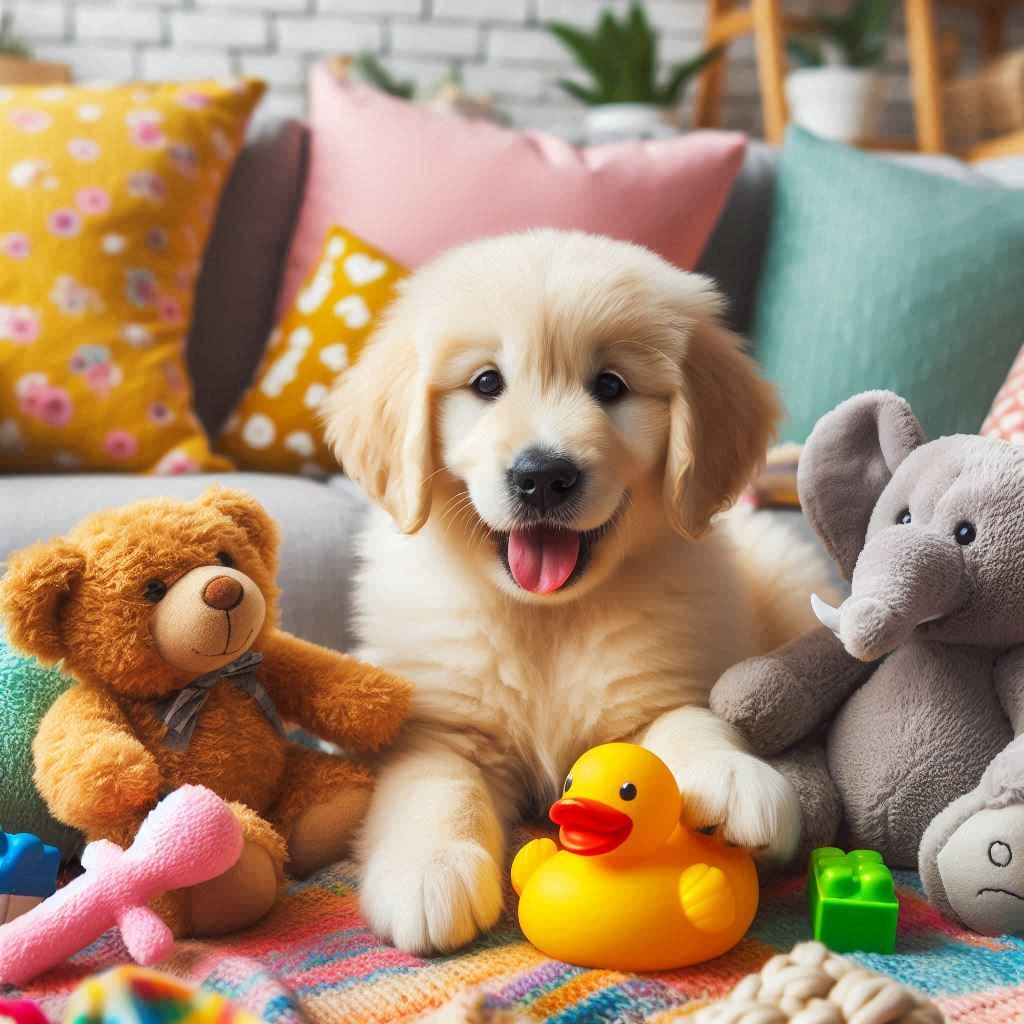No, dogs most likely don’t think stuffed animals are real live creatures. Here’s why:

Dogs Most Likely Don’t Think Stuffed Animals Are Real Live Creatures
- Senses Tell a Different Story: Dogs rely heavily on their senses, especially smell and sight, to understand the world around them. A stuffed animal won’t have the same lifelike scent or movements as a real animal. Dogs use their powerful noses to detect and identify living beings, and a stuffed toy simply doesn’t emit the same odors as a real animal.
- They Recognize Inanimateness: While a dog might play excitedly with a stuffed animal, they can likely distinguish it from a living thing. The lack of response or movement from the stuffed animal during play is likely a clue. Dogs are observant and quickly notice that a toy doesn’t react, breathe, or exhibit any behaviors characteristic of live animals.
- Focus on Scent Over Appearance: When a dog interacts with a stuffed animal, they’re more interested in the scent it carries, which could be yours or another familiar smell. This doesn’t necessarily mean they think it’s alive. Dogs rely more on their olfactory senses than on visual cues, so a toy with a familiar scent can be comforting without being mistaken for a real creature.
So Why Do Dogs Play with Stuffed Animals?
- Fulfills Play Instincts: Stuffed animals can satisfy a dog’s natural instinct to chew, toss, and pounce. These toys provide an outlet for energy and mimic the playful behaviors dogs would exhibit in the wild.
- Comforts Them: The familiar scent on a stuffed animal might provide comfort and security, especially for puppies separated from their litter. Having an object that smells like their owner or home can help ease anxiety and offer a sense of safety.
- Fulfills Hunting Drive (For Some): For some dogs, particularly terriers bred for hunting small prey, a stuffed animal might trigger their hunting instincts. These dogs enjoy shaking, pouncing, and “killing” the toy as part of their natural behavior.
Here Are Some Interesting Things to Note
- Blind or Deaf Dogs Can Still Enjoy Stuffed Animals: The lack of sight or hearing doesn’t prevent a dog from enjoying the familiar scent and texture of a stuffed toy. These dogs rely even more on their sense of smell and touch to interact with their environment and can find great joy in stuffed toys.
- Material Matters: The material and texture of the stuffed animal can influence how a dog interacts with it. Some dogs might prefer soft and cuddly toys, while others might enjoy crinkly or squeaky ones. The choice of toy can depend on a dog’s personal preference and the sensory feedback they find most satisfying.
Conclusion
Overall, while dogs don’t think stuffed animals are real, these toys can serve a valuable purpose in providing entertainment, comfort, and fulfilling play instincts for our canine companions. Understanding why dogs enjoy these toys can help pet owners choose the best playthings to keep their furry friends happy and engaged.
